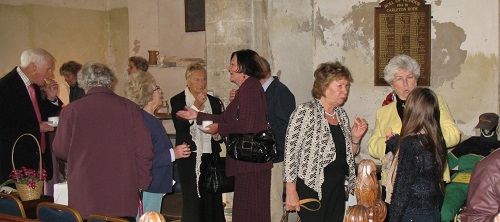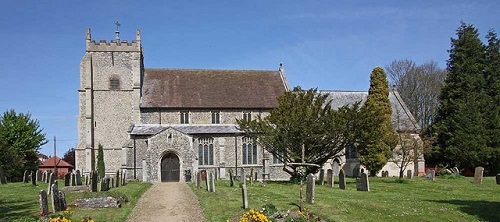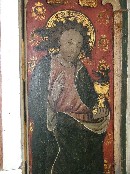Carleton Rode Community Groups
Carleton Rode All Saints Church
April 26, 2022 - 11:04:10Carleton Rode All Saints'

The church at Carleton Rode is part of the Pilgrim Benefice, Long Stratton & Wacton Parishes. The group is made up of eight churches from the surrounding parishes of Aslacton, Bunwell, Great Moulton, Tibenham, Wacton and Long Stratton.
At Carleton Rode All Saints we have an active and lively congregation. Details of our church can be found on the church’s own Facebook page https://www.facebook.com/Carletonrodeallsaints/or in the monthly parish magazine. You can pick up a copy of the parish magazine from the church. Another useful source of information about our church is 'A Church Near You' on http://www.achurchnearyou.com/.
Messy Church

Although Carleton Rode doesn’t have a Messy Church we are closely linked with the Long Stratton Benefice which holds Messy Church every third Saturday of the month at St Mary’s Junior School in Long Stratton.
Messy Church at St Mary’s Junior School is really well attended with over 20 families regularly attending. The morning starts with breakfast at 9 a.m. followed by crafts and activities at 9.30 a.m. and finally a short 15-minute worship service aimed at the young at 10.45 a.m.
This event is free but donations are always welcome. For more information contact Joan on 01953 860291 (evenings only) – more details on Messy Church can be found at http://www.messychurch.org.uk.
The History of our Church

The feast of All Saints is of ancient origin and can be traced to the foundation by Pope Gregory III (731–741) of an oratory in St Peter's, Rome, for the relics ‘of the holy apostles and of all saints, martyrs and confessors, of all the just made perfect who are at rest throughout the world’, with the day of remembrance established on 1 November. This fell on the Celtic holiday of Samhain, which was also a harvest festival.
A November festival of all the saints was already widely celebrated on 1 November in the days of Charlemagne. It was made a day of obligation throughout the Frankish empire in 835, by a decree of Louis the Pious, issued 'at the instance of Pope Gregory IV and with the assent of all the bishops', which confirmed its celebration on 1 November. The festival was retained after the Reformation in the calendar of the Anglican Church.
The chancel of All Saints' in Carleton Rode dates from the twelfth century and was consecrated around 1307 but construction took a further 200 years to complete.
The nineteenth-century reconstruction of the top of the tower makes it appear as if a huge church has been built against a small tower. In fact, the top collapsed in the eighteenth century, and it is a truncated form of the original tower that you see today.
A sign at the back of the church, recording a now-lost inscription on the tower, remembers the alterations and monies paid for the work:
This church was built, in it God to adore, and ought to have been repaired long before.
By which neglect, we did great sums expend. Then let successors look in time to mend,
For if decays they early don't prevent, they will, like us, when 'tis too late, repent.
When the nave was rebuilt in the late fifteenth century the building was already an aisled church. The east windows of the two aisles are older than the nave, and the east end of the new arcades falls short of the wide chancel arch, leaving an earlier arch on the south side which is little more than a large doorway.

All Saints' Church is notable for the dado of the roodscreen, depicting the eleven disciples and St Paul. A recent addition is the upper element of the roodscreen, made by a local craftsman.
In the north aisle, a memorial recalls two Norfolk tragedies of the Second World War. Twenty-eight American servicemen lost their lives in two separate mid-air collisions over Carleton Rode in 1944 and 1945.